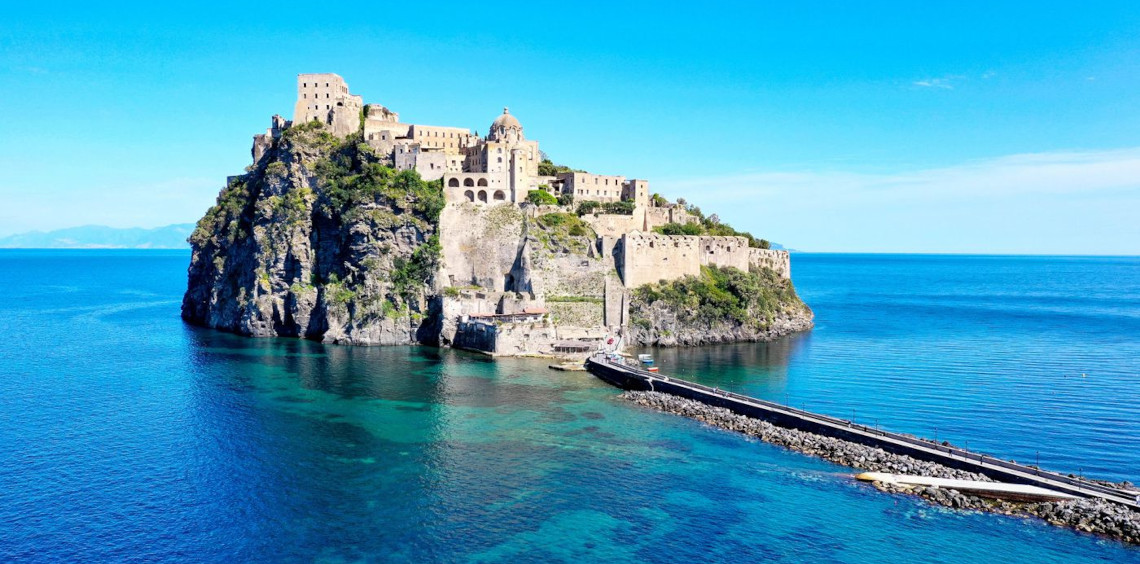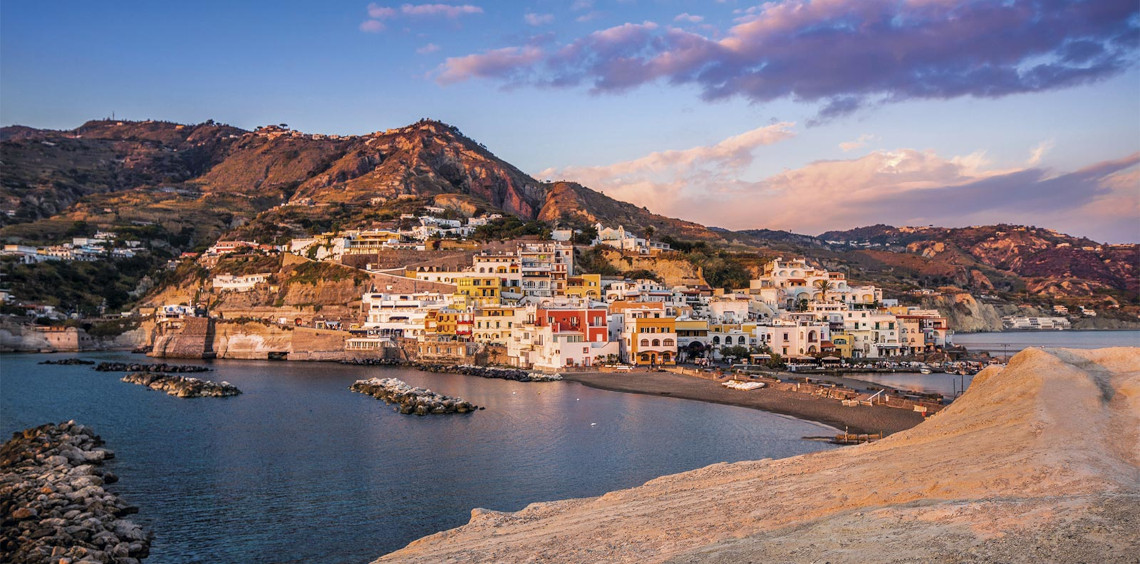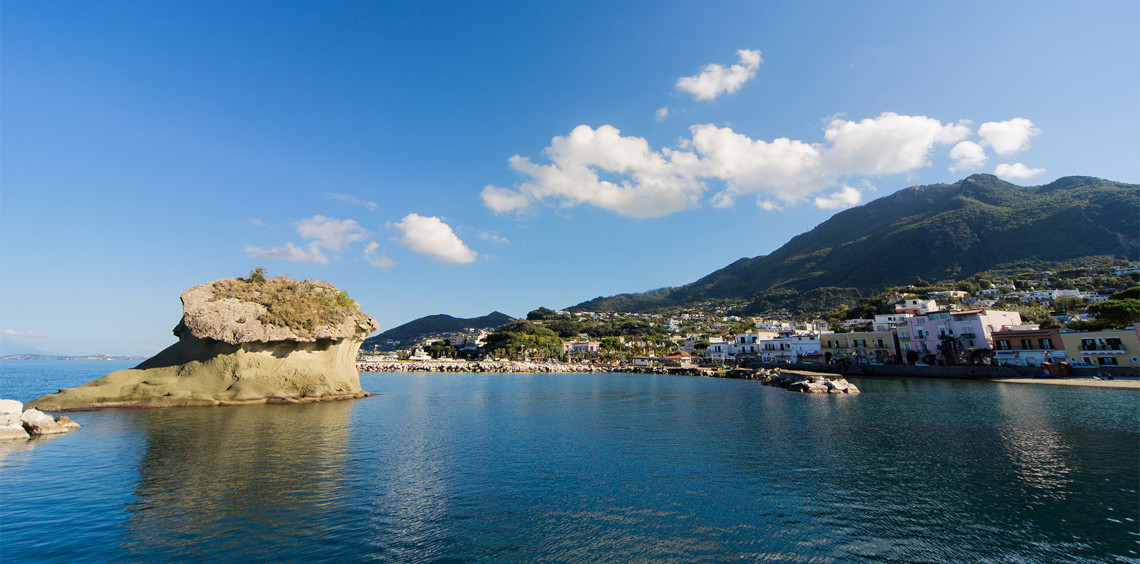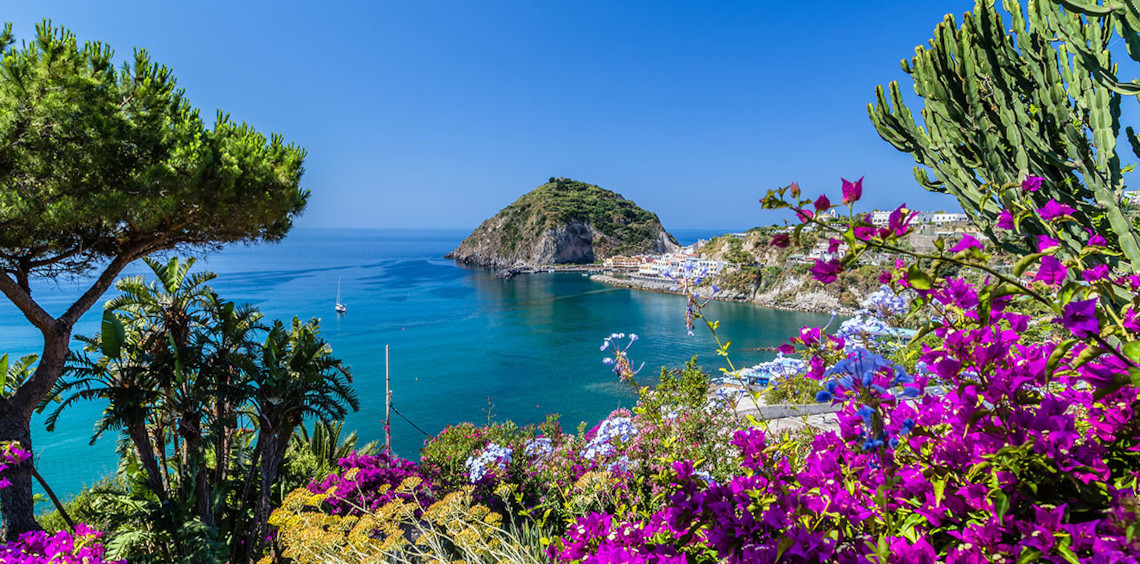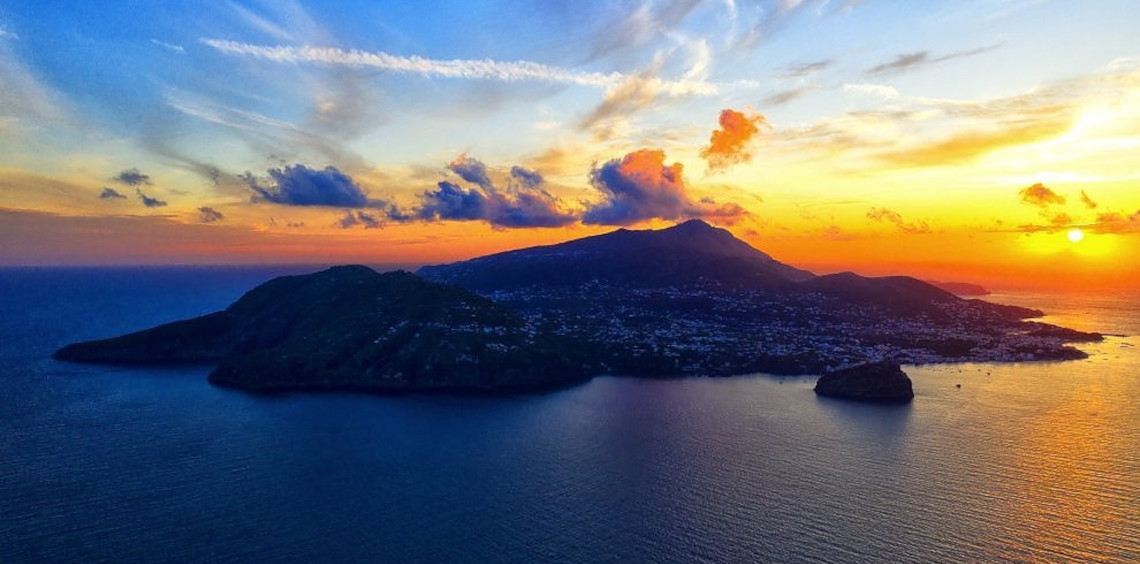Ischia
Ischia is the largest island in the gulf of Naples.
Land of sea, fire and legends, it welcomes thousands of tourists each year, primarily attracted by its wellness offerings.
The green island, as it is often known, has the largest hydrothermal heritage in Europe: 103 springs, 67 fumaroles, and 29 thermal basins, along with avant-garde tourist offerings, which combine natural richness and high-level accommodation facilities.
But that’s not all:
Ischia was the first Greek colony in the west, a residential and thermal centre for the romans, and a free port for commercial trade with the middle east. the richness of ischia’s past is housed in various museums on the island, but also along its streets: roman aqueducts, sixteenth century villages, stone houses.
Today, ischia is divided into six municipalities, each with its own rich tradition and richness.
The island is dominated by Mount Epomeo, a volcanic crater. to explain the eruptions, earthquakes, and springs of hot water gushing from the underground, legend tells the story of the giant Tifeo, who, during a fight with Jupiter, was hurtled to the Centre of the island, where he rests and sometimes stirs.
Ischia is also known for its jet-set and everyday life, speedboat trips, and moonlit walks.
The entire coast is scattered with beaches and little sheltered coves that look out onto the crystalline sea,
While the slopes of Mount Epomeo host small villages with unique panoramas frozen in time.
The union of land and sea also renders ischia unique from a culinary perspective: the most celebrated local recipe is "rabbit cacciatore", flavored with cherry tomatoes and aromatic herbs, while restaurants on the coast serve the freshest seafood.
A vacation in ischia should be at least ten days long, in order to discover not only the warm Mediterranean sun, but also a rich cultural heritage, filled with traditions and festivals of patron saints that get lost in the nights of time.
